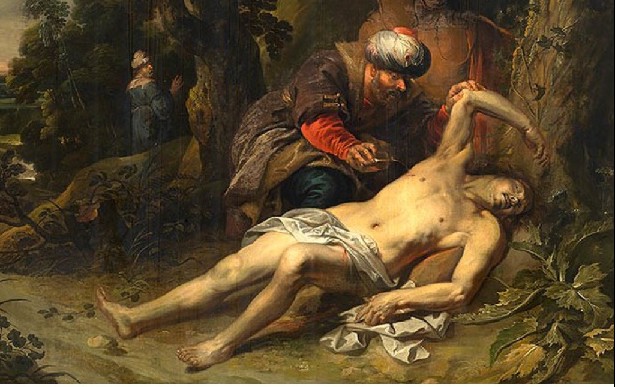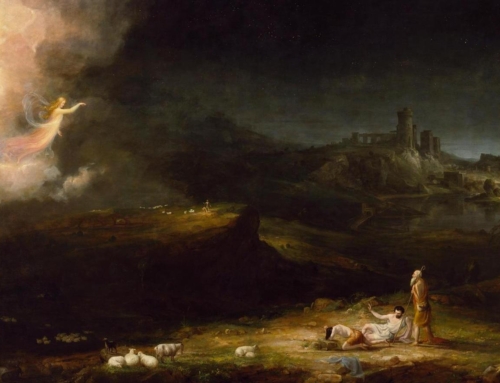At the closing session of the Second Vatican Council, Pope Paul VI noted: “The old story of the Samaritan has been the model of the spirituality of the council. A feeling of boundless sympathy has permeated the whole of it.” Pope Francis appeals to this comment in Misericordiae Vultus, the Bull in which he establishes the Extraordinary Jubilee of Mercy, which we are currently celebrating. The Parable of the Good Samaritan is of prime importance not only for this Year of Mercy, but for the entire Church always and everywhere as she engages the world.
The traditional interpretation of this parable, from the earliest days of Christianity until the nineteenth century, has been that Christ is the Good Samaritan. This story He tells is the story of fallen mankind and His own mission to save us. Christ’s mission is a mission of mercy. He travels the roads with the gifts of wine and oil (the sacraments) to heal all those he finds. He does not count the personal cost, but puts himself in harm’s way to stop and pick up those who have been beaten by sinfulness and robbed of the dignity that should be theirs. He carries them to the inn (symbolic of the Church), for the wounds are serious and a full recovery is only possible there. Payment for mankind’s recovery comes at Christ’s own expense, as He suffers the Passion for us, and His Second Coming is the promised return to repay any outstanding debts in full. Jesus Christ is thus the face of the Good Samaritan’s mercy, and also, as Pope Francis says at the opening of Misericordiae Vultus, “Jesus Christ is the face of the Father’s mercy.”
The modern interpretations of the past two centuries tend to emphasize the story as a story, without the Christological, ecclesiological, and sacramental understandings of the parable. These interpretations are not without profit, because they provide practical suggestions on how we are to imitate this model Jesus provides for us with all the people we meet on the road who are injured and suffering. The context for Jesus’ telling the parable involves a lawyer questioning Him about obtaining eternal life. In response to Jesus’ counter-questioning, the lawyer quotes the Torah about loving God and neighbor. Jesus agrees with the answer, but the lawyer pushes further: “and who is my neighbor?” At the conclusion of the parable, Jesus returns to the lawyer’s question, but it is a modified question: “Which then of these three seems to you to have become a neighbor of the one who fell into the thieves?” The verb Jesus uses is “become.” We are called to become neighbors to all those we encounter, which implies a way or manner of engaging the people we meet. Jesus’ final command, “Go and do likewise,” is in the present active tense, meaning that this becoming a neighbor is an ongoing and continuous process.
The fullest meaning of the parable, however, can be found in uniting these two interpretations: We become a neighbor each time we show the same mercy to another that Christ has shown to us. We stop and draw near to our neighbor because they are in need, regardless of the cost. We care for their wounds, and we give of our material and spiritual resources to assist their recovery. We don’t leave them, but rather bring them to the Church, where they can receive the spiritual care that will bring them to full health. We don’t leave them, but promise to return to support and encourage them in their recovery. In the parable of the Good Samaritan, those who are called to follow Jesus are shown the steps of charity by which we may imitate Him more closely in assisting each and every neighbor we encounter on the road.
May this Year of Mercy assist us in becoming better neighbors and thus gain eternal life.
Our Lady of the Way, pray for us.
✠
Image: Balthasar van Cortbemde, The Good Samaritan







